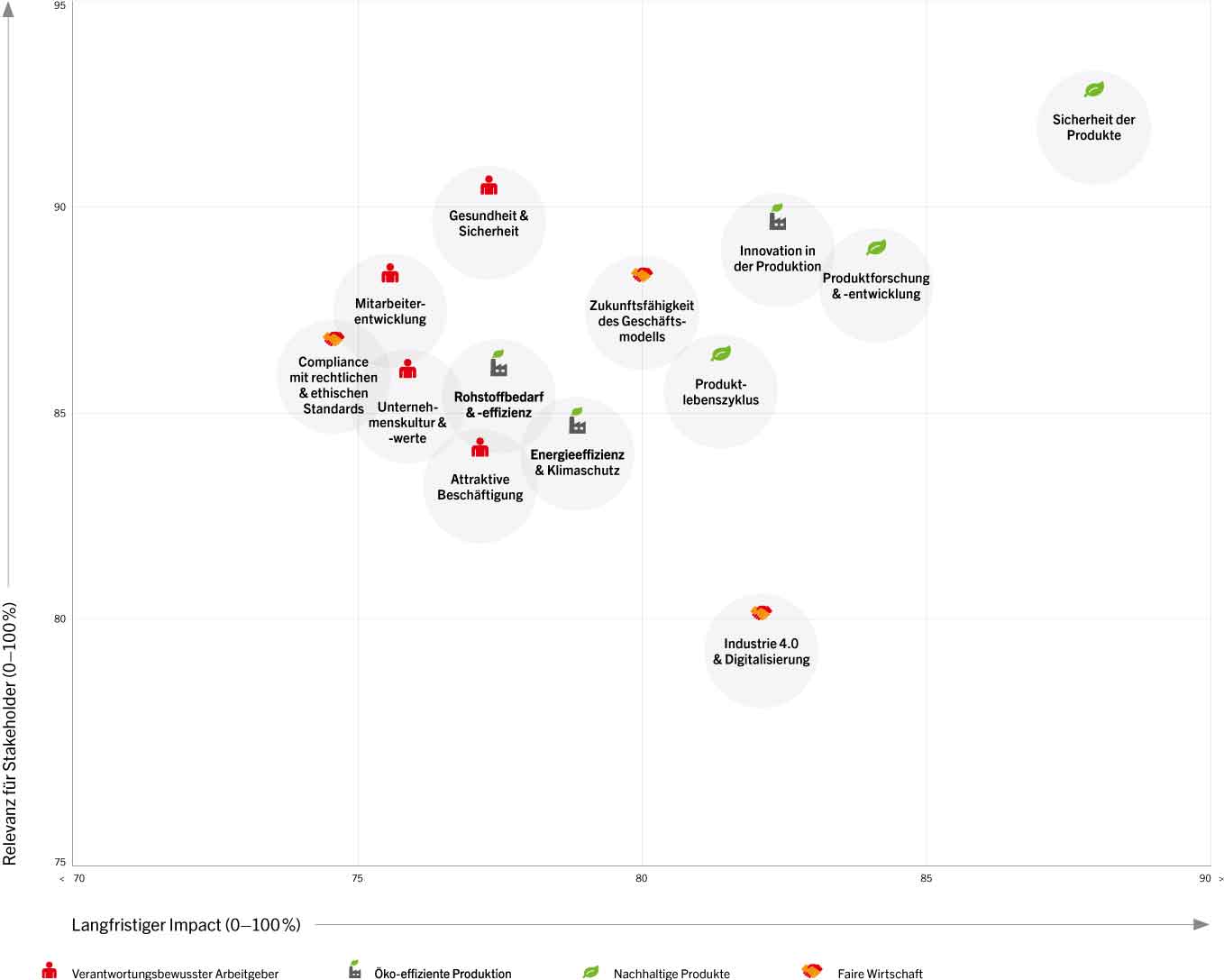Sustainability
PALFINGER takes into account the consequences of its operations along the entire value creation chain and engages its stakeholders. The relevant aspects have been grouped into the following issues: responsible employer, eco-efficiency in production, sustainable products and fair business.
Materiality Analysis
The changes occurring in the Company and its environment in recent years prompted PALFINGER to carry out another comprehensive materiality analysis in 2017. In this analysis, the material economic, social, ecological and ethical aspects were reviewed and updated. In addition, the previous commitment and the significance of the 17 Sustainable Development Goals (SDGs) were assessed. The result confirmed the previous material issues, which are reflected in a well-balanced manner in PALFINGER’s four sustainability areas.
-
Product safety
-
R & D for products
-
Innovation in production
-
Viability of business model
-
Health & safety
-
Product life cycle
-
Employee development
-
Energy efficiency & climate protection
-
Raw materials demand & efficiency
-
Attractive employment
-
Corporate culture & values
-
Compliance with legal & ethical standards
-
Industry 4.0 & digitalization
Sustainability Management
PALFINGER assumes social and ecological responsibility, which it deems to be a material success factor. For this reason, PALFINGER measures its value enhancement also by means of sustainability indicators. Its sound financial basis, the quality of its products and services, and its focus on sustainability are the foundations of PALFINGER’s success.


The Management Board cooperates with other executives in preparing the strategy, policies and values of the Company. The results of the materiality analysis, which form the basis for sustainability reporting and the workshops, as well as the sustainability programme and targets, are adopted by the Management Board.
Targets







In 2016, two long-term HR targets were defined: to keep employee turnover below 10 per cent and to keep staff absences due to industrial accidents below 0.11 per cent. Two quantitative goals to be achieved by 2022 were defined under the diversity scheme: to raise the percentage of non-Austrians working at headquarters to 20 per cent, and to increase the percentage of women in top management positions until it corresponds to the percentage of women in the overall headcount of the Group. In the environmental domain, ever since 2014 PALFINGER has set itself the annual goal of improving energy efficiency and reducing hazardous waste by 1.8 percentage points each (as measured by the index). In the year under review, a CO2 reduction of 25 per cent of the 2015 base year was defined as a long-term target to be reached by 2030.
The internal reporting structures and systems, as well as the non-financial indicators, are in line with the results of the materiality analysis and have been integrated into financial reporting.


